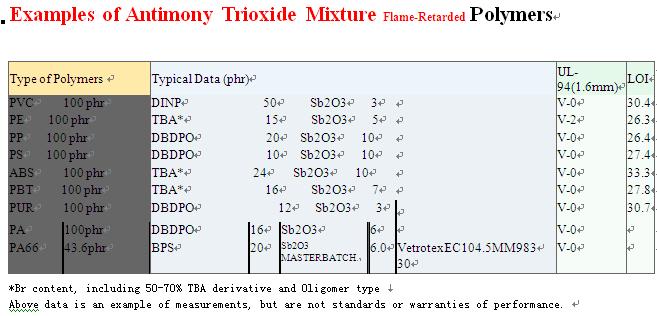Antimony trioxide is not considered a hazardous chemical by the Department of Transportation unless packaged in containers of more than 30 pounds. Typically, antimony trioxide is sold in bags of 50 pounds or 25 kilograms, neither of which meets this criterion. If the product is sold in super sacks, which can range from 1,000 pounds to 1,000 kilograms, then it must be shipped as a hazardous chemical of Hazard Class 6.1 and Packing Group III.
Proper personal protective equipment for handling antimony trioxide include goggles, gloves and a lab coat or work garment over street clothes. While antimony will generally not harm anyone who touches it with their bare skin, some people do seem to be more sensitive to antimony trioxide. In those cases, individuals develop a rash similar to poison ivy after prolonged or repeated exposure. This condition is known in the industry as antimony measles. People tend to be more susceptible to antimony measles when their skin is moist as when perspiring.
Antimony trioxide should not be ingested or inhaled if possible; so most manufacturing or packaging operations require their personnel to wear masks or respirators when dealing with antimony trioxide powder. If powder is inhaled, there is generally some mild irritation to the respiratory tract and the individual might experience a sore throat or cough. If for some reason antimony trioxide is ingested there can be irritation to the mouth, nose and throat as well as nausea, vomiting, bloody diarrhea, dizziness, and muscular pain. A doctor's care should be sought if ingestion occurs. Subjects with pre-existing conditions like heart disease or impaired respiratory function could experience more severe reactions more quickly so exposure should be limited.
Chronic exposure to antimony trioxide could result in heart or liver damage and according to the State of California, antimony trioxide is a carcinogen. Some companies that have employees who are exposed to antimony trioxide on a regular basis have each employee go through a yearly physical including chest x-rays to make sure there are no long-term adverse effects from their exposure. This is mostly precautionary, but is good practice.
It is also good practice for employees to wash their skin and hair thoroughly after exposure to antimony trioxide dust. As a result, many employers provide their employees with uniforms to wear while at work and then equip their locker rooms with showers so that everyone can clean himself or herself before they leave work. This way, you can ensure that no antimony trioxide leaves the facility.
| SAM XU is a technologist with JIEFU. Amspec manufactures and distributes full package flame retardants. |








0 comment:
Post a Comment